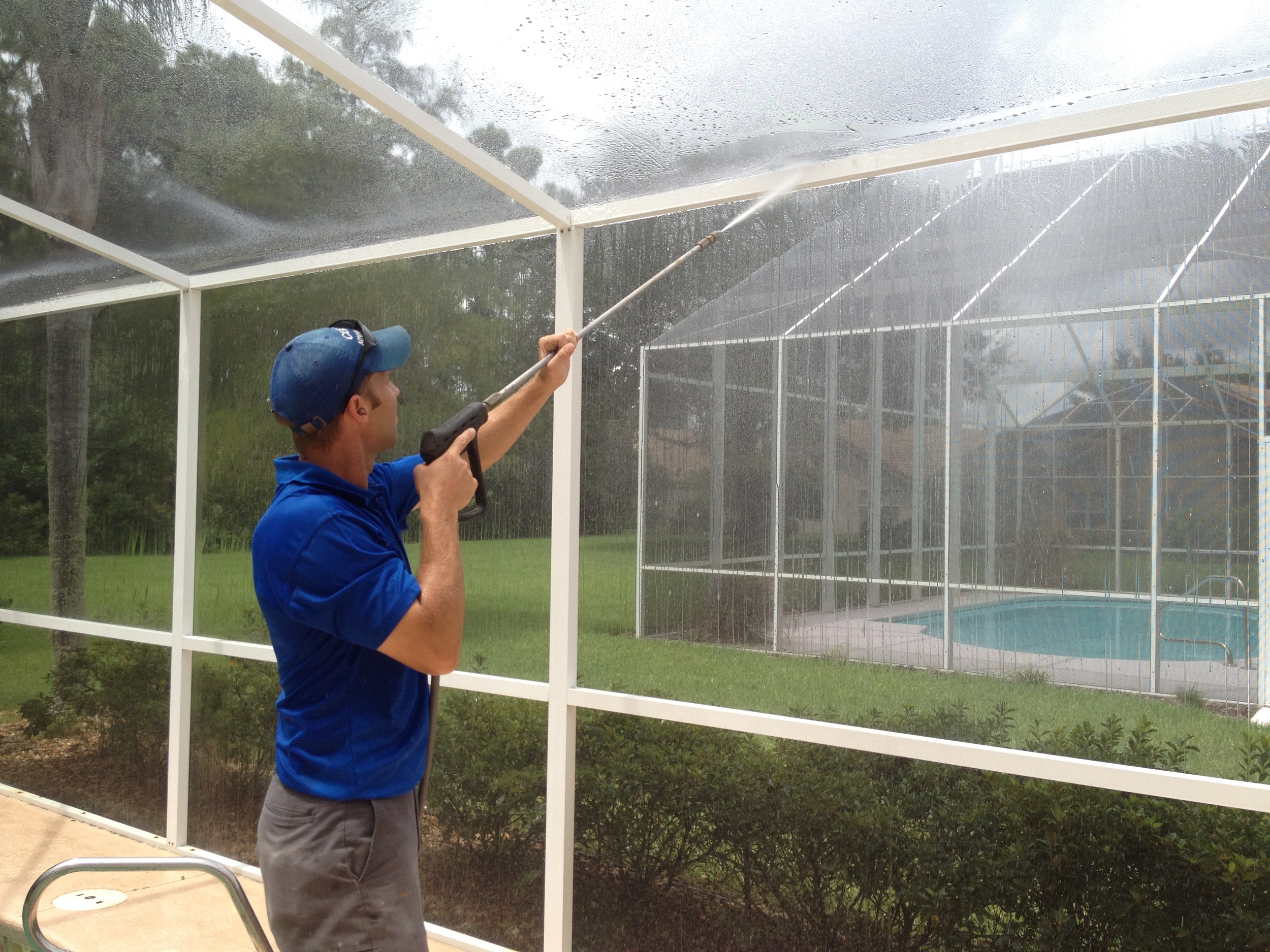
Screens and screened-in porches are the unsung heroes of outdoor living — they let in fresh air, keep bugs out, and give you a shady, relaxing retreat. But over time, dust, pollen, spiderwebs, and mildew can turn your breezy haven into a dirty mess. 😷🌿
So, the question comes up: Can you pressure wash screens or screened-in porches?
The answer: Yes, you can — but you need to be VERY careful. 💦
Screens are far more delicate than siding or concrete, and using the wrong approach can leave you with torn mesh, bent frames, or water inside your home. Let’s walk through how to clean them safely and effectively. 🧽
🧵 Understanding the Materials
Most screen mesh is made from one of these materials:
- Fiberglass — common and flexible, but fragile under pressure
- Aluminum — more durable, but prone to bending
- Polyester or vinyl-coated — stronger, often used in pet-proof screens
The frames are usually aluminum or wood, and the screen is stapled, clipped, or snapped into place. None of this is built for high water pressure. ⚠️
So, if you just grab your pressure washer and blast away at full force, you’re probably going to:
- Rip the mesh
- Pop the screen from its frame
- Soak everything inside the porch
But with the right technique, pressure washing can be a safe and efficient cleaning tool. 🎯
💧 When Pressure Washing Makes Sense
Pressure washing a screened-in porch might be worthwhile if:
- You have years of dirt or algae buildup
- You’re prepping to stain, repaint, or reseal the area
- You want to deep clean pollen and mildew from every nook and cranny
Just make sure you’re doing it correctly — and at the right settings. 🔧
Browse Amazon Here For Popular Pressure Washers And Accessories
🧼 Step-by-Step: How to Pressure Wash Screens Safely
1. Use Low Pressure — Always
Use the widest-angle nozzle you have — 40° or even 65° — and stand at least 4 to 5 feet away from the screen to start.
A good rule: Start low and back off. You can always move closer if needed, but you can’t undo a tear.
2. Test a Small Section First
Pick a corner and test your pressure and distance. If the screen bows inward or flaps from the force, you’re too close or the pressure is too high.
3. Spray From the Outside
Always spray from the exterior of the porch if possible. This pushes debris out rather than forcing it deeper into the screen. It also minimizes the chance of water getting into furniture or flooring inside.
4. Don’t Spray Head-On
Angle your spray to about 30–45 degrees. Spraying directly at the mesh increases tension and can blow it loose.
5. Avoid Wood Trim or Painted Surfaces
If your porch has painted wooden frames, avoid spraying them directly — water can strip paint or cause wood to swell.
Instead, use a soft cloth or brush for those areas and rinse lightly with a garden hose. 🧹🚿
6. Use a Gentle Cleaner
If the grime is thick or you see signs of mildew, pre-treat the screens with:
- A biodegradable outdoor cleaner
- A mix of white vinegar and water
- A light dish soap solution
Apply with a sprayer or sponge, let sit for 5–10 minutes, then gently rinse with the washer.
Browse Amazon Here For Biodegradable Pressure Washing Detergents
7. Cover Interior Items
Even with gentle pressure, water can mist through mesh. Remove or cover:
- Cushions and furniture
- Electronics or lighting
- Area rugs or flooring that might absorb water
A few plastic tarps or old sheets can save you a big headache. 🛋️🧴
🧽 Alternatives to Pressure Washing
If your screens are delicate or removable, consider:
- Taking the screens out and hosing them down flat
- Using a vacuum with a brush attachment
- Cleaning with a soft brush, soapy water, and a rinse
These methods are safer and still effective — just a bit more work.
✅ Final Thoughts
Pressure washing screens and screened-in porches can be done, but it’s not a task to rush or take lightly.
Stick to these key rules:
- Use low pressure and wide angles
- Spray at an angle, never head-on
- Clean from the outside in
- Protect the inside of your porch
Done right, pressure washing can refresh your screens and brighten up your whole outdoor space — without doing any damage. 🧼🪟🌞
Browse Amazon Here For Top Rated Power Washers And Accessories






